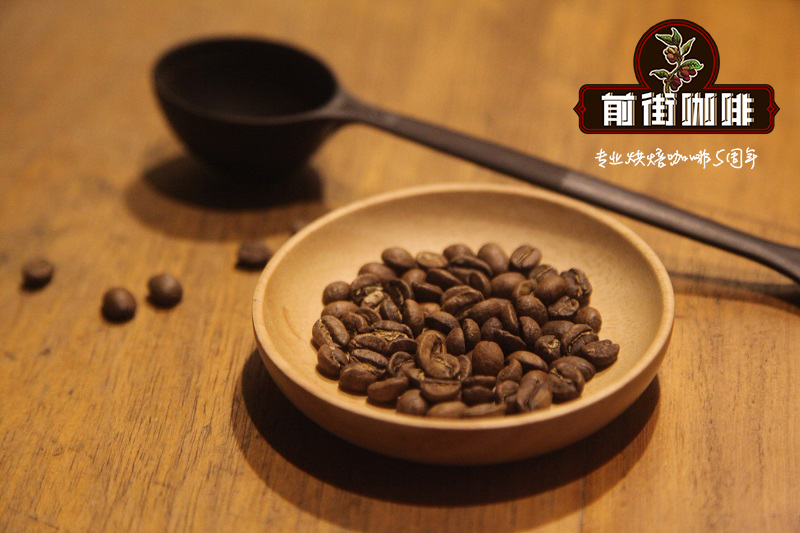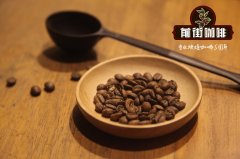How to brew Indian coffee without curry Indian coffee beans taste low-sour and mellow

Professional coffee knowledge exchange more coffee bean information please follow the coffee workshop (Wechat official account cafe_style)
Qianjie-Indian Coffee introduction
It is hot all over India, and most of it has a tropical monsoon climate, while the Tarr Desert in western India has a tropical desert climate. There is an obvious monsoon in summer and no monsoon in winter. The climate of India is divided into rainy season (June-October), dry season (March-May) and cool season (November-February). It is affected by the barrier of the Himalayas in winter and is less affected by cold current or cold high pressure to the south.
The ideal climatic conditions for growing coffee are related to temperature and rainfall. Arabica coffee varieties are suitable for growing at temperatures between 23 °C (73 °F) and 28 °C (82 °F), and rainfall occurs in the range of 60 mi 80 inches (1.5 mi 2.0 m).
If the rainfall is less than 40 inches (1.0 m), irrigation facilities must be provided. Arabica coffee has a relative humidity range of 70 percent, while robusta coffee has a relative humidity range of 80 percent.
Coffee is grown in three areas of India, located in traditional coffee-growing areas in the south, non-traditional areas along the east coast and the north-east.
Arabica (premium coffee) grows between 1000 m (3300 ft) and 1500 m (4900 ft) above sea level, and Robusta grows between 500 m (1600 ft) and 1000 m (3300 ft) above sea level (though of low quality, but adapts well to environmental conditions).
[Kent (Kent)] the Tibika hybrid, which was found in the Kent Cafe Garden in Mysso, India in 1911, is a hybrid of S288 and iron pickup, with high yield and rust resistance. The aroma of coffee is thicker than that of bourbon, and it has been introduced to new world producing countries such as Kenya and Indonesia. Named after the Englishman L.P. Kent, he is the owner of Doddengudda Manor.
[S795] locally known as Jember, this variety was bred by a cross between Kent and Coffea Liberica in India in the 1940s. 1955 the Indonesian Coffee and Cocoa Institute (ICCRI), named Jember, is widely grown in India, Indonesia and Ethiopia. S795 is currently the main variety in India, accounting for 70% of the total output of Arabica.
Indian coffee is famous in Europe for its low acidity and sweetness, so it is widely used in espresso, which is a more acidic and brighter coffee.
Parameters: grindability BG 5R (Chinese standard No. 20 sieve pass rate 58%), ratio of powder to water 1:13, water temperature 85 ℃, extraction time one minute and 30 seconds.
Technique: use 15 grams of powder, the ratio of powder to water is 1:10, steam 30 grams of water for 30 seconds, slowly inject water to 120g, end when injecting water to 150g, remove the filter cup and then pour 45g of water into the coffee liquid.
In short: Qianjie is a coffee research hall, happy to share the knowledge about coffee with you, we share unreservedly just to make more friends fall in love with coffee, and there will be three low-discount coffee activities every month. The reason is that Qianjie wants to make more friends drink the best coffee at the lowest price, which has been Qianjie's tenet for 6 years!
END
Important Notice :
前街咖啡 FrontStreet Coffee has moved to new addredd:
FrontStreet Coffee Address: 315,Donghua East Road,GuangZhou
Tel:020 38364473
- Prev

How about Indian coffee beans? is Indian coffee good? I'm sure it doesn't taste like curry.
Professional coffee knowledge exchange more coffee bean information please follow the coffee workshop (Wechat official account cafe_style) front street-Indian coffee introduction AD 1600, Santa Bababad pocket with a few can germinate coffee seeds planted in Karnataka's own yard mocha seven stars at first everyone did not care about these gardens of extraterrestrials, for quite a long period of time
- Next

Is the origin of coffee in Africa? Description of flavor and taste of Essel coffee bean origin introduction
Professional coffee knowledge exchange more coffee bean information please follow the coffee workshop (Wechat official account cafe_style) front street-Ethiopian coffee introduces coffee in the world is rich and interesting, coffee from each continent has some common characteristics, coffee is the product of the equator to 15 degrees north latitude, therefore, South America and Asia
Related
- Beginners will see the "Coffee pull flower" guide!
- What is the difference between ice blog purified milk and ordinary milk coffee?
- Why is the Philippines the largest producer of crops in Liberia?
- For coffee extraction, should the fine powder be retained?
- How does extracted espresso fill pressed powder? How much strength does it take to press the powder?
- How to make jasmine cold extract coffee? Is the jasmine + latte good?
- Will this little toy really make the coffee taste better? How does Lily Drip affect coffee extraction?
- Will the action of slapping the filter cup also affect coffee extraction?
- What's the difference between powder-to-water ratio and powder-to-liquid ratio?
- What is the Ethiopian local species? What does it have to do with Heirloom native species?

